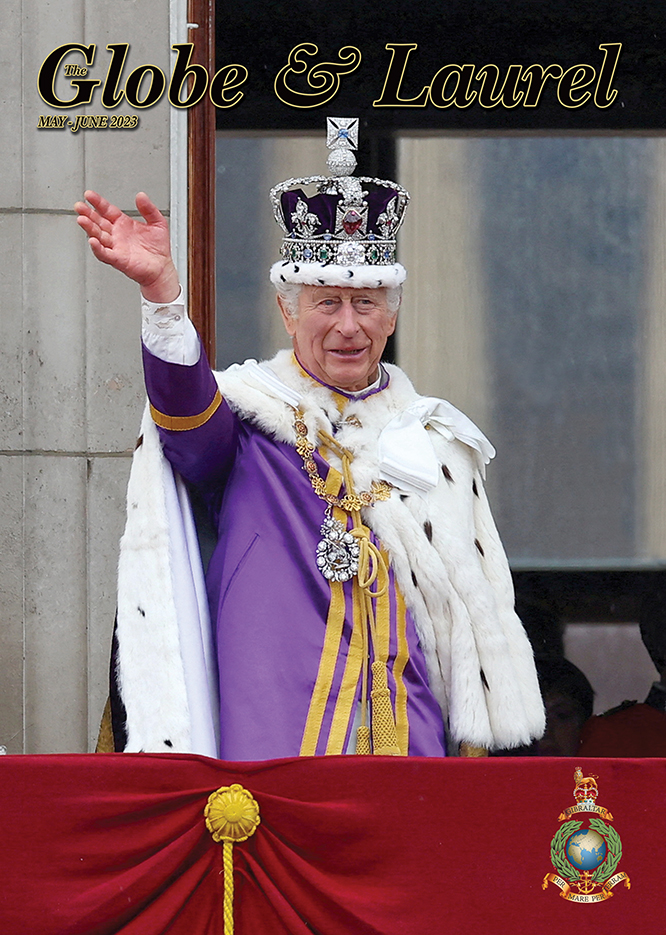Ex Junglie Defender
Aviation Combat Service Support Squadron Shows its Flexibility
The following article is taken from the latest issue of the Globe & Laurel magazine.
Click the button below to discover more.

Imagine heavily armed armoured vehicles attempting to form a ring of steel around an Oshkosh Tanker filled with fuel, roaring down a wide highway. Not a scene from post-apocalyptic ‘Mad Max’ movies, but Royal Marines testing their ability to support helicopters in the field.
For five days the relatively quiet airfield at Merryfield in Somerset was dominated by the rattle of gunfire, the clatter and rumble of heavy vehicles and the smell of burned aviation fuel as personnel in a small, highly specialised unit demonstrated their collective abilities. Ex Junglie Defender tested both experienced and new members of the Sqn in their ability to move, blend in and hide (mobility, camouflage and concealment) in rural and urban environments.
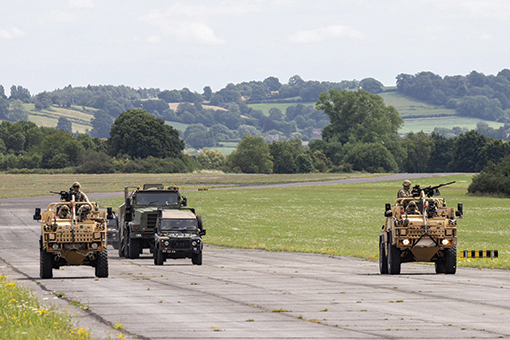
The Aviation Combat Service Support Squadron is unique in the UK Armed Forces and expected to meet the needs of Merlin and Wildcat helicopters when operating in the field: providing fuel, food, spare parts, ammunition, medical care, ground transportation – effectively all the logistical support required, bar engineering. Its ability to deploy rapidly is integral to the success of the Commando Helicopter Force – as is its ability to fend off foes.
As with the rest of the Commando Helicopter Force, the Sqn is expected to go where the Royal Marines go – jungle, desert, Arctic, as well as temperate climes like Somerset. Although it is high summer, we have eyes firmly fixed on the Force’s Winter Deployment to Norway which culminates with the major NATO Arctic exercise, Nordic Response (previously known as Cold Response).
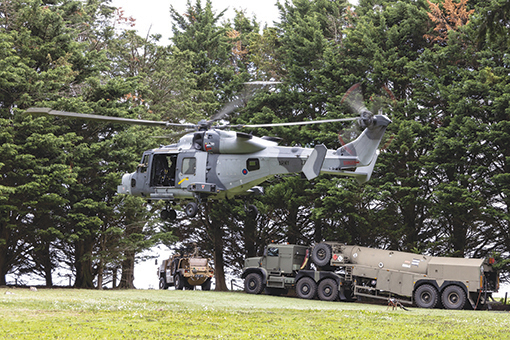
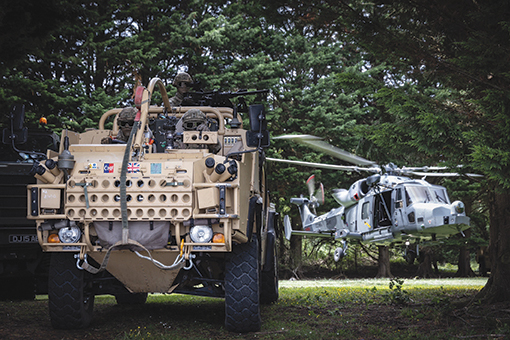
Personnel are expected to plan routes, carry out reconnaissance and, when they reach their destination, give the helicopters what they need: in this instance forward refuelling in the field, far from any base. So, to Merryfield, a satellite airfield to the Commando Helicopter Force’s home base at Yeovilton. With Merlins and Wildcats awaiting fuel, the Sqn formed a convoy of vehicles – a tanker and a handful of Land Rovers – with a pair of Jackal armoured vehicles equipped with heavy machine-guns as escorts. The Jackals (Mobility Weapon-Mounted Installation Kit, or MWMIK) are crewed by trained operators having mastered day and night ground tactical manoeuvre over challenging terrain to gain a tactical advantage.
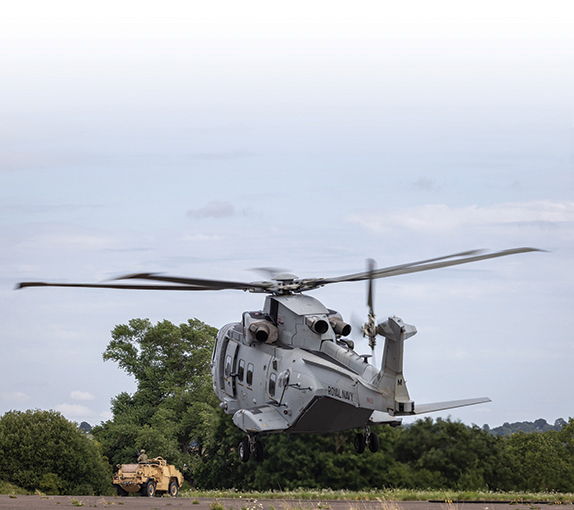
Junglie Defender proved to be something of an eye-opener for marines new to the Unit. One Sqn member commented: ‘The contribution the Sqn makes to Commando Helicopter Force’s operational output is something I was unaware of while serving within the rest of the Royal Marines. We regularly deploy on Littoral Response Group (South) in warm weather climates, and in support of our NATO allies in the High North and Arctic Circle region. This blend of training really reinforces why we work so hard to maintain our skills to a high standard.’ Assessors were looking for a combination of skills, imagination, safety, diligence and professionalism and were suitably impressed. Capt Alan Hunter RM said: ‘Support Sqn has grown into a product unparalleled within Joint Helicopter Command. The Forward Refuelling Point capability is constantly evolving to counter current and novel threats, through innovative solutions and deep knowledge of the tactical employment of the equipment we use.’
Read more from the Journal of the Royal Marines
For more information, and to read similar stories, visit: Globe & Laurel – RMA – The Royal Marines Charity (rma-trmc.org)
